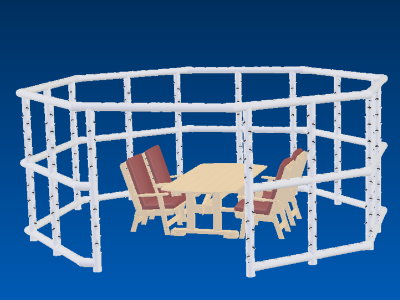What is Hydroponics?
Basics

Plant roots appear in three different forms:
1. Supporting roots
Supporting roots are more pronounced in larger plants, shrubs and trees and the name itself explains the function.
2. Nurturing Roots
These are responsible for the supply of nutrients and fluid intake. In hydroponic systems, these are more pronounced, which in turn is reflected in faster and stronger growth.
3. Aerial roots
They serve to absorb moisture from the air. They have developed a special tissue for this purpose, the so-called velamen radicum. Some aerial roots also possess chloroplasts for photosynthesis.
In hydroponics, the roots are alternately supplied with air and a nutrient solution. An adjusted PH value (~PH5.5 - 6.5) and an appropriate water temperature prevent root rot here. Likewise the right dosage and an interval control. In the water, the plants are supplied with exactly the right nutrients and salts that they need for their growth and phase. Only the components of the solution that are actually needed are removed, "overfeeding" is almost impossible if the EC value has been adjusted . This results in stronger root growth which results in faster growth and a stronger plant as a result. The water consumption, compared to normal agricultural technology, is reduced to 20%.
Implementation

The basics already showed that only water, nutrients
and air are used in hydroponics.
This is accomplished with submersible pumps, sprinkler or
sprinkler systems, air compressors, and aquarium air stones.
Air compressors are used in almost all systems to additionally
enrich the nutrient solution with oxygen. Exceptions are
Aeroponics, VerticalGrowTowers, Wick System and Kratki-DWC.
Submersible pumps are used in every system except Kratki DWC and
wick systems.
Chemistry

Of course, it is not enough to just supply the
plants with tap water, you need a small chemical mix for this.
This "chemistry" consists of common salts and essential
substances.
These can be purchased ready-made or, with a little diligence, can
also be produced naturally. The substances are also contained in
many kitchen leftovers.
Egg shells are eg. a perfect supplier of calcium and magnesium.
Potassium is found in carrots and banana peels.
Nutrients for hydroponics consist of the following:
The required mixture consists of NPK, secondary nutrients and
micronutrients. NPK consists of nitrogen (N), phosphorus (P) and
potassium (K) in %). In addition, CalMag (calcium-magnesium),
Epson salt,
Secondary nutrients such as calcium Ca, magnesium Mg and sulfur S,
and micronutrients such as iron Fe, copper Cu, zinc Zn, manganese
Mn, boron B, molybdenum Mo, chlorine Cl, silicon Si.
So far, the tomato master blend 4-18-38 has turned out to be a
perfect mixture. In addition to the Epson salt and a PH
regulation, you have a simple and effective solution that works
perfectly for almost all plants.
A high nitrogen and nitrate content promotes leaf growth, while a
high phosphorus content in turn promotes stronger root growth.
Various information can be found in the download area.
Implementation in Detail
Small overview of the basics of the systems:
NFT - NutrientFilmTechnique: A trickle is generated in a tube from which the root ends can extract their nutrients and the water they need. This requires only one pump and a gradient of ~3%/m
DWC - DeepWaterCulture:
There are three different versions:
Standard DWC: Holes for the netcups are cut in the lid of a container and the water level is regulated to the bottom of the netcups. Air is bubbled up from below using bubble stones and an air compressor.
Rafting-DWC: Almost identical in construction to the previous version, but floating plates are used here. This version is used on large hydro farms.
Kratki: This is a purely passive version. The young plants are prepared as described and the water is used up. Due to the falling water level, the plant develops more aerial roots and in this way gets its water-air mixture.
Ebb and Flow Basin: Here, the system is divided into a main tank and a basin for the plants. This basin is filled with clay incendiary balls, perlite or gravel. The submersible pump conveys the water into the pool and this is completely emptied in cycles using a bell siphon.
Aeroponics: This includes all systems that are irrigated or sprayed. Aeroponics is also useful with root and tuber vegetables. VGT's (VerticalGrow-Tower) work with cyclic irrigation, which in turn promotes very strong root growth.
Wick System: A netcup or flower pot with a wick is placed in a water container. Instead of the usual soil, substitutes such as coconut wool are used
Drip System: A common version here are the Dutch/Bato buckets. These are filled with perlite, gravel or clay fire balls and the nutrient solution is slowly dripped on through a thin hose.







